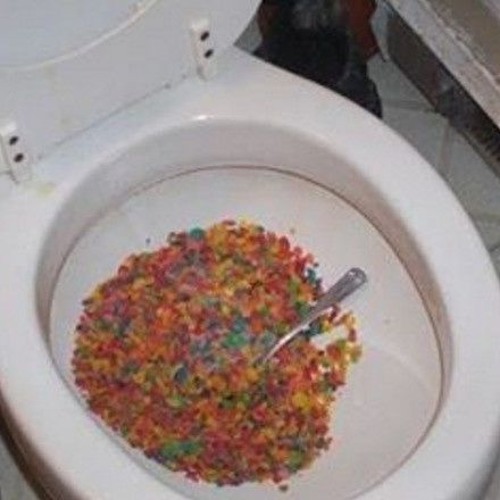Is it Safe to Dispose of Food Waste in the Toilet?
Is it Safe to Dispose of Food Waste in the Toilet?
Blog Article
What are your ideas regarding What Can Happen If You Flush Food Down the Toilet??

Introduction
Lots of people are often confronted with the issue of what to do with food waste, specifically when it concerns leftovers or scraps. One common inquiry that arises is whether it's all right to flush food down the commode. In this post, we'll look into the reasons why people might consider purging food, the consequences of doing so, and alternate methods for proper disposal.
Reasons individuals might consider purging food
Absence of recognition
Some people might not understand the prospective injury triggered by purging food down the commode. They might wrongly believe that it's a harmless practice.
Ease
Purging food down the toilet might seem like a quick and easy remedy to disposing of unwanted scraps, especially when there's no nearby trash bin readily available.
Negligence
In some cases, individuals may just select to flush food out of sheer laziness, without taking into consideration the consequences of their activities.
Consequences of flushing food down the commode
Ecological impact
Food waste that ends up in rivers can contribute to contamination and harm water communities. Additionally, the water used to purge food can stress water resources.
Plumbing concerns
Flushing food can lead to clogged pipelines and drains, creating expensive pipes repairs and inconveniences.
Kinds of food that need to not be purged
Fibrous foods
Foods with fibrous structures such as celery or corn husks can obtain tangled in pipes and create blockages.
Starchy foods
Starchy foods like pasta and rice can soak up water and swell, resulting in clogs in pipelines.
Oils and fats
Greasy foods like bacon or cooking oils ought to never be flushed down the bathroom as they can solidify and trigger blockages.
Correct disposal approaches for food waste
Making use of a garbage disposal
For homes geared up with garbage disposals, food scraps can be ground up and purged via the plumbing system. Nevertheless, not all foods appropriate for disposal in this fashion.
Recycling
Particular food packaging products can be reused, lowering waste and decreasing environmental effect.
Composting
Composting is an environment-friendly way to take care of food waste. Organic products can be composted and made use of to enhance dirt for horticulture.
The significance of proper waste management
Reducing environmental harm
Correct waste management practices, such as composting and recycling, aid minimize contamination and protect natural resources for future generations.
Securing pipes systems
By avoiding the technique of flushing food down the toilet, homeowners can protect against expensive plumbing fixings and keep the integrity of their plumbing systems.
Final thought
To conclude, while it might be tempting to purge food down the bathroom for convenience, it is necessary to recognize the prospective consequences of this action. By taking on appropriate waste management methods and dealing with food waste responsibly, people can contribute to healthier plumbing systems and a cleaner atmosphere for all.
FLUSH FOOD DOWN THE TOILET?
FLUSHING FOOD CAN CAUSE BLOCKED DRAINS IN YOUR HOME
All of the plumbing fixtures in your home are connected to the same sewer pipe outside of your home. This outdoor sewer pipe is responsible for transporting all the wastewater from your home to the Council sewer mains. Even small pieces of food that go down the kitchen sink can cause problems for your sewer. It should therefore be obvious that flushing larger bits of food, such as meat, risks a clog in either the toilet itself or the sewer pipes. Flushing greasy food is even more problematic because oil coagulates when it cools, coating the interior lining of your pipes.
THE TOILET IS NOT A BIN
Food isn’t the only thing that people shouldn’t be flushing down the toilet. People use the toilet to dispose of all kinds of things such as tampons, makeup wipes, dental floss, kitty litter and even underwear. Water goes to great lengths to educate residents about the high costs and stress placed on wastewater treatment systems simply from people flushing the wrong stuff down the toilet. It costs taxpayers millions of dollars each year, and homeowners thousands in blocked drain repairs.
FLUSHING FOOD IS A WASTE OF WATER
Flushing food is a waste of our most precious resource - water. In June this year Level 1 water restrictions were introduced to protect water supply from drought conditions. Much of New South Wales continues to be affected by prolonged drought with recent figures revealing up to 97 per cent of the state remains in drought. Depending on whether you have a single or dual flush toilet, every single flush uses between five and 11 litres of water. In the current climate this is a huge amount of water to be wasting on flushing food that should be placed in the bin (or better yet, the compost).
https://www.jabplumbingsolutions.com.au/blog/can-you-flush-food-down-the-toilet

I ran across that page about Think Twice Before Flushing Food Down Your Toilet while doing a lookup on the web. Sharing is caring. Helping others is fun. We thank you for your readership.
Schedule Estimate Report this page